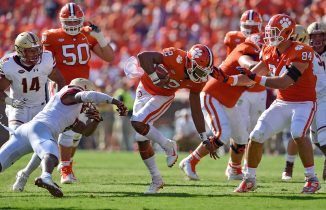When the Obama Administration came into power, they had a fundamental belief. It was “Never let a Good Crisis go to Waste.” With the Housing Crisis in full swing, the Obama Administration did just that. They took steps to essentially “nationalize” mortgage lending through the Dodd Frank Act.
Under Dodd Frank, the Consumer Finance and Protection Bureau was created and among its many mandates, tasked with establishing new rules for mortgage lending across the country. Lenders would have to follow the new rules or face legal recourse from borrowers if they made unsafe on predatory loans. The new mortgages were named “Qualified Mortgages.”
Qualified Mortgages had two basic rules that lenders had to comply with. They were:
1. No “unsafe” loan terms.
2. Determine that the borrower has the “Ability to Repay” the loan.
The unsafe loan terms ban prevented Qualified Mortgages from being loans that disproportionately led to the Housing Crisis. No longer allowed were Stated Income loans, Interest Only loans, Negative Amortization loans, Balloon loans and other risky loans.
Determining that a borrower had the Ability to Repay meant that the lender would have to Verify Income, Verify Employment and Assets and other items critical in the loan process.
The most important part of the Ability to Repay provision was that borrowers were “restricted” from having Debt Ratios greater than 43%, a major problem that caused many loan defaults during the Housing Crisis.
SAFE HARBOR
There was a significant problem with the Debt Ratio restriction imposed by the Qualified Mortgage rule. Fannie Mae, Freddie Mac, FHA and VA routinely approved mortgages with a higher than 43% Debt Ratio.
If the 43% Debt Ratio standard was adhered to, then large numbers of mortgage loans would have to be denied and that would restrict further the Housing Recovery. So Dodd Frank created the Safe Harbor provision of the Qualified Mortgage.
If a loan was eligible for purchase by Fannie Mae or Freddie Mac, or for the loan guarantees by the FHA or VA, then the loan was granted a “Safe Harbor Exception.” The Safe Harbor would protect lenders from borrower lawsuits in the event of loan default.
The key to understanding the Safe Harbor provision and how it would affect mortgage lending, is understanding how the Fannie/Freddie loan process worked.
Fannie and Freddie have their own “automated” loan approval systems. When a lender originates a loan, the processor uploads the file to the automated system, and a Fannie/Freddie approval is generated stating that the loan is eligible for purchase.
The approval systems are not based upon the Qualified Mortgage standard. Depending upon the loan factors, they can approve loans with Debt Ratios up to 50%, 55% or greater. They can also approved loans with borrowers having credit scores into the mid 500’s.
The Fannie/Freddie loan approval systems kept the mortgage lending process going under the Qualified Mortgage Safe Harbor rule. Mortgage lending continued as before, without the worry of the 43% Debt Ratio rule.
Today, 95% of all mortgage loans are Qualified Mortgages, most of which are purchased by Fannie and Freddie.
FHA guarantees about 800,000 loans per year. Since FHA is the easiest loan to apply and be approved for, it is also the riskiest loan program.
Essentially, the mortgage lending process has been nationalized through the GSE’s and FHA.
SAFE HARBOR EXPIRATION
On January 1, 2021, the Safe Harbor provision of the Qualified Mortgage expires. At that time, the protections from lawsuits under the Safe Harbor is gone. Herein lies the problem for mortgage lending in the future.
Without the Safe Harbor, the 43% Debt Ratio provision becomes dominate. Lenders will be far more restrictive in approving loans at higher than 43% Debt Ratios. The reason is that if loans default, then the borrowers have a greater ability to file lawsuits against lenders for predatory lending claims.
What is even worse are the FHA loans. FHA will approve loans up to 55% Debt Ratios with credit scores under 600. These are the riskiest of all Qualified Mortgage loans currently and high extremely high default rates.
Lenders will refuse to accept FHA loan applications because of the upcoming risk without the Safe Harbor provision.
This is going to have a dramatic effect upon mortgage lending beginning in January 2021.
THE COMING DOWNTURN
Knowledgeable people are already seeing the forward leading indicators of a Housing Downturn in late 2020 and 2021. When the Safe Harbor provision expires, the downturn will come into full effect.
Expect mortgage lending to be dramatically reduced since qualifying for mortgage loans will become much more difficult. With reduced mortgage lending, there will come decreased home sales and a drop in prices (something we are beginning to see in many parts of the country).
What the CFPB will do when the Safe Harbor provision expires is anyone’s guess. No one even knows if there are any discussions going on at this time.
The common sense thing to do would be to allow the Safe Harbor provision to expire with nothing replacing it. This would make mortgage lenders more responsible in lending practices due to the greater liability.
Without Safe Harbor, mortgage lending would become more restrictive, but with entities like FHA guaranteeing loans with limited ability to repay, this would be a good result. Maybe even, the country would experience a lessening of the nationalization of the mortgage lending process.
This post was created with our nice and easy submission form. Create your post!



Loading…